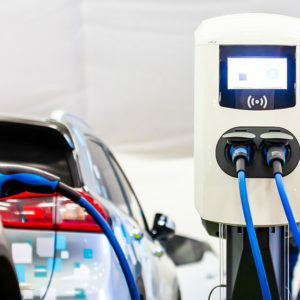The Inflation Reduction Act allocates $340 billion in a complicated scheme of tax credits and rebates for electric vehicles (EVs). The administration plans for nationwide charging stations and an all-electric federal automotive fleet by 2030.
Further, it has set a target of making EVs to be half of all new vehicles sold in 2030, estimated by the Edison Electric Institute to be 5.6 million EVs.
Electricity must be generated to power these EVs. Putting aside the fantastic transition of electricity generation and transmission to renewables, how insane are EV aspirations given the cancellation or re-examination of domestic oil leases, rejoining the Paris Climate Accords, the Russian invasion of Ukraine, the prohibition of drilling on federal lands, the cancellation of the Keystone pipeline, and the establishment of energy conservation standards for a variety of home appliances? Not to mention numerous other actions to curtail domestic energy production.
The point of this environmental spear is the EV business. That point is blunt, given the average electric car price (about $66,000) is out of reach of the typical car buyer. Another negative is that EV insurance costs are likely to be higher with more hefty premiums for damage coverage (battery repair costs) and product liability risks.
As if this is not enough, there are the batteries themselves. The major components of a typical battery include: graphite (52 kg), aluminum (35 kg), nickel (29 kg), copper (20 kg), steel (20 kg), manganese (10 kg), cobalt (8 kg), lithium (6 kg) and iron (5 kg). The weighted average of these components’ price changes in the past year has been plus 249 percent.
The problem of cost is serious, but by taking the ridiculous EV route, there are much deeper difficulties for trade related to the battery input supply. For example, natural graphite is not produced in the United States; however, the U.S. consumes considerable amounts of graphite. With projected2030 EVs sold, U.S. imports of graphite (currently one-third from China) will have to increase by 732 percent to produce EV batteries alone.
Turning to nickel, the United States has one operating nickel mine scheduled to close in 2026. With 2030 anticipated EV production, imported nickel would increase by 94 percent. Such an increase will require America to turn to more problematic import sources.
Manganese has not been produced domestically since 1970. With EV production in 2030 as projected, manganese imports will increase by19 percent. The United States imports 85 percent of its total consumption from such unreliable suppliers as Gabon and South Africa.
Turning to cobalt, the United States consumes 6,700 metric tons of cobalt annually and imports more than 75 percent of it. If forecast EV sales in the United States come to pass, imports and/or production of American cobalt will have to increase 986 percent).
The most challenging component of EV batteries is lithium. The United States has a single lithium brine-producing operation in Nevada generating an unrevealed (“avoiding proprietary data”) amount. As of now, we use 2,000 tons of lithium per year; at least 25 percent in 2021 and no less than 50 percent in 2020 were imported. If the number of EVs are as anticipated, the imports of lithium for electric cars alone will need to increase by 2,211 percent, or more than 22 times current levels of consumption in 2030.
Considering that lithium increased in price in the past year by more than 300 percent, lithium is very likely to become a critical bottleneck. The reliable availability of lithium is a concern of importers with more than 75 percent of the lithium coming from Australia and Chile.
While lithium sources are under development, worldwide production increases are certainly far in the future.
Permitting for mining and related activities is a costly and lengthy process. Permitting for a mine takes 10 years or more, assuming low numbers of lawsuits and minimal legal wrangling. The Interagency Working Group on Mining Reform has been considering how to streamline the law, but any changes will need full legislative and executive approvals and will take a long time, even ignoring the inevitable litigation delays.
An additional obstacle to EV production is the Chinese domination of the EV market. China produces 51 percent of the EVs manufactured. The United States produced 9 percent, trailing Germany. The global market is growing, with the Chinese the biggest consumer giving it market power beyond that of other countries.
Summarizing American climate policy is absurd because it will collide with so many roadblocks from domestic power generation to procurement of EV inputs. It’s not too late to turn around to steer public policy in a reasonable direction rather than wasting resources in the EV dead-end.





